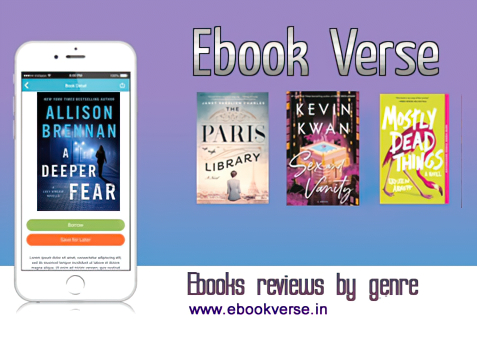Sleep Better
Poor sleep (insomnia) can be caused by several factors, such as stress, anxiety, medications, illness, among others.
Insomnia means being without sleep for several hours, but sometimes we sleep, but the sleep is light (not very restful). There are people who wake up several times during the night, and who sleep lightly. Any slight noise wakes them up.
Types of insomnia include onset insomnia (trouble falling asleep), maintenance insomnia (trouble staying asleep), and behavioral insomnia of childhood.
There are other types of sleep disorders, such as restless legs syndrome, parasomnia, narcolepsy, and sleep apnea.
For severe cases, you should seek help from a sleep doctor or psychologist.
For mild cases, you can start by doing yoga, meditating, and trying to worry less. Do not take worries into bed, don't eat a heavy meal two hours before bed, or drink coffee at night.
Avoid watching TV or looking at your smartphone, as the light from these devices can disrupt your sleep-wake cycle.
Products to help you sleep fall into categories such as: EMS devices for sleep aid, earplugs that reduce up to 30% of sound, sleep patches with melatonin, and sleep pils (natural herbal remedies such as valerian, California poppy and lavender).
For me, I am a light sleeper and sensitive to noise.
The simple sound of a dog barking in the street (even if it's soft) bothers me. Even though I feel psychologically thinking about it, and even though the tiredness is strong, I can't sleep.
What kind of methods do I use?
I take pills that increase melanin production and contain valerian and other plants. I use a melatonin patch to sleep, and I also use ear plugs.
It is also useful, in these cases, to have some hypnotherapy sessions to help us "reprogram" the brain to ignore such noises.
I tested the watch that electromagnetically stimulates (EMS), it has two electrodes. I tested this microcurrent gadget and it really helped me out.
This study provides initial electrophysiological evidence of changes in brain activity associated with reduced arousal (and thus greater sleepiness).
Research has demonstrated that the application of a low-intensity, direct current that delivers monophasic or biphasic pulsed microamperage currents across the brain can mitigate anxiety, depression, and sleep issues.
Avoid buying a handheld device, because when you fall asleep, you open your hand and turn around on the bed, and the device falls, no longer in contact with your skin. I prefer to wear the watch on my wrist as it remains in place.
Microcurrent technology: Adult sleep aid wristband watch machine with microcurrent massage acupuncture points to promote sleep, relaxation, and stress relief.
Charges via USB. The device has a timer that can last up to 30 minutes.
Forget other sleep aid EMS devices, as they are expensive (over $129) and not practical at all.
Some have two electrodes to put in your ears, but remember that when you sleep and turn around in bed, these wires can get in the way and cause the electrodes to fall out.
Ear Plugs
There are several different types of ear plugs for sleeping, and I have already tested several. Some are made of silicone and reduce noise only by 10%, not practical because are easy to slip out of your ears when you're asleep.
Others are electronic (internal batteries) and claim to electronically cancel external noise, but most do not. These electronic plugs cost too much, over $80, and they don't do what they promise!
I use "loop" silicone ear plugs. That's the model that works best for me. Some have a wider "ear cap" that covers the ear cavity, and are shaped like a ring on the outside. These reduce the greatest percentage of noise and do not fall out of the ear (they remain well fixed).
They have a noise reduction rating (NRR) of up to 32 dB.
There are hundreds of models, including moldable silicone plugs, available. There are a few things you need to consider when choosing the best ear plugs:
Quality-price.
Size and format.
Do they fall easily or not fall easily?
Do they reduce noise a little or a lot?
Do your ears hurt when you sleep on your side on the pillow?
Are they associated with a greater intra-auricular pressure?
When I slept on my side on the pillow, I felt the pressure from the silicone ear plugs on my ear.
So I started using "loop" silicone ear plugs, they are not very prominent, they are almost 90% inside the ear, this reduces contact pressure. The "loop" it's an acoustic filter ring.
They are the best, they are washable, reusable, will last several years.
These ones are really good too, for $21,99 but it is two pairs in the box.
With a noise reduction rating (NRR) of 35dB ! With acoustic filter ring and sound filter outer.
They are made from soft, hypoallergenic silicone, they fit snugly into your ears without causing any discomfort, even during extended wear. There are numerous satisfied users (as evidenced by the reviews).
Melatonin Patches
Different sleep patches can contain different levels of melatonin. Choose wisely. I choose those that have at least 1 mg of melatonin. There are patches that have little adhesion and fall off easily. I choose ones that have a strong adhesion (they don't fall off) and I usually stick them on the back of the neck (on the back of the neck).
Hypnos patches are good, with many layers, and they have 2.5 mg of melatonin, magnesium, and lavender 5 mg. The pack has one-month supply (30 patches).
White noise Machine
Some people may benefit from white noise machines by masking environmental or outside noises that are causing disturbed sleep.
If your room is quiet, it is easier for your brain to pick up on sounds from the outside (dog barking, cars, etc.
In a quiet environment, you can hear everything and assign a value to it.
In a room with background white noise, it "masks" the other noises.
Obviously, it does not work for everyone, as we are all emotionally and psychologically different.
This device has 5 timer options, up to 4 hours, 32 level volume control and 25 different soothing sounds.
White noise, pink noise, fan sounds, lullabies, sea waves, rain, train, brook, river, piano, singing birds, campfire and other natural sounds.
In white noise, the power is constant, but in pink noise, as the numbers get bigger, the difference in power becomes smaller, so the higher-pitched sounds are softer. Because the lower frequencies are louder than the higher frequencies in pink noise, it sounds less abrasive and leads to a better night's sleep.




















0 comments